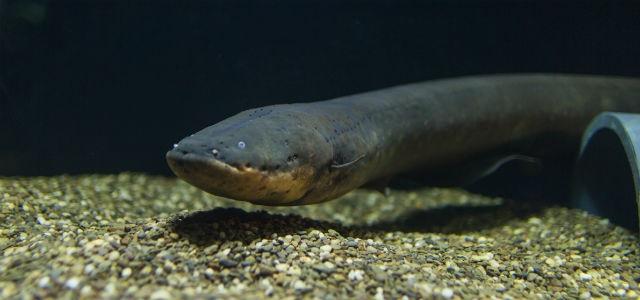Turns out there’s a shocking number of electric eels, and some could give off 1,000 volts
This iconic electric fish is no longer alone on its family tree.

Do you know what that sound is, Highness? Those are the electric eels. They lurk in the freshwater basins of South America, paralyzing prey with bioelectric shocks that function almost exactly like tasers.
Electrophorus electricus was first identified by the Swedish zoologist Carl Linnaeus in 1766, and the shocking fish immediately ensnared the collective imagination. In 1806, famous naturalist Alexander Humboldt allegedly attempted to capture some of “die electrischen Fische” by corralling them with his horses. Two of the horses died.
For 250 years, scientists have categorized the electric eel as a singular species, completely alone in its genus. That all changed this week. New findings reported in Nature Communications unveil two additional species: Electrophorus voltai and Electrophorus varii.
Using genetic, morphological, and ecological data, scientists identified three distinct lineages of electric eel in Greater Amazonia. Subtle differences in head and gill shape are the only outward clues of their diversity. (Alas, none are the kind that only shriek louder when they’re about to feed on human flesh.)
One important point to clarify: Electric eels may be eel-shaped, but they’re not part of the eel lineage. With their smooth, grayish bodies and flat, toothless mouths, electric eels are actually a type of knifefish, more closely related to catfish than to true eels. But they’re the only genus of knifefish that can generate strong electric currents to stun prey.
One of the newfound species—Electrophorus voltai—releases the highest bioelectric current ever recorded. When E. voltai flexes its muscles, it generates a truly electrifying 860 volts, making it the strongest living generator by far (the previous record holder was its cousin E. electricus with a measly 650 volts).
“That’s just such a striking amount of voltage for an organism to be able to build up and discharge naturally,” says study co-author Casey Dillman of Cornell University. For comparison, wall outlets only deliver about 120 volts, and you certainly don’t see many people walking around shoving forks into sockets.
But 860 volts probably isn’t the peak of electric eel performance. Researchers only examined 107 specimens for the new study, and they know that longer eels tend to give stronger shocks. Assuming they didn’t happen to capture a bunch of E. voltai on the upper end of the length spectrum, chances are they didn’t clock the highest possible voltage, either.
“If we added more data points, we would probably discover a stronger discharge,” posits James Albert, an ichthyologist from the University of Louisiana at Lafayette who was not involved in the study. “I’m sure they’d get to well over a thousand volts.”
The third species, E. varii, provided scientists with much less of a literal shock. But there may be an intriguing reason why: these specimens were found in murky lowland waters, where mineral content makes for a more conductive environment. So in E. varii‘s world, it takes less electrical discharge on their part to pack the same predatory punch. E. voltai turned up in waters slightly less conductive than is typical for our most familiar species of electric eel, which could explain why they expend more energy on their zaps.
Dillman and his colleagues are just getting started: his team aims to use 21st-century techniques to “explore, document, and describe” all the knifefishes of South America. Their discovery of E. volati and E. varii—which together disrupt centuries of assumptions about an iconic species—took place only one year into a five-year project.
This only serves to remind us just how much is out there. “These are big fish,” says Dillman. “They can be six feet long, in some cases. They were hiding in plain sight.” Despite hundreds of years of explorers and naturalists and taxonomists attempting to describe everything on the planet, we’re still a long way from understanding even the specimens right in front of our noses. There’s no telling how much more we might discover once we really start digging.
But while modern tools and techniques give us the power to investigate these mysteries, our time is running short. Recent years have seen extensive land development in South America, which includes the construction of hundreds of massive dams, and fires—ones set intentionally by farmers and those caused by drought—continue to threaten the region. Regardless of whether we can successfully find and catalogue an animal before it disappears, says Dillman, most extinctions at this point are tied to human activities. “I think that’s something we bear a lot of responsibility for,” he says.
Eels aren’t currently in danger of going anywhere. But the Amazon is undoubtedly home to many creatures we’ve yet to encounter. Without a complete understanding of the area’s range of biodiversity, Albert says, it’s impossible to know just how much our ceaseless development will impact the ecosystem.
“Nature is a complex puzzle,” he says. “You don’t always know exactly which piece you gotta break before everything falls apart.”
Kat Eschner contributed reporting for this article.